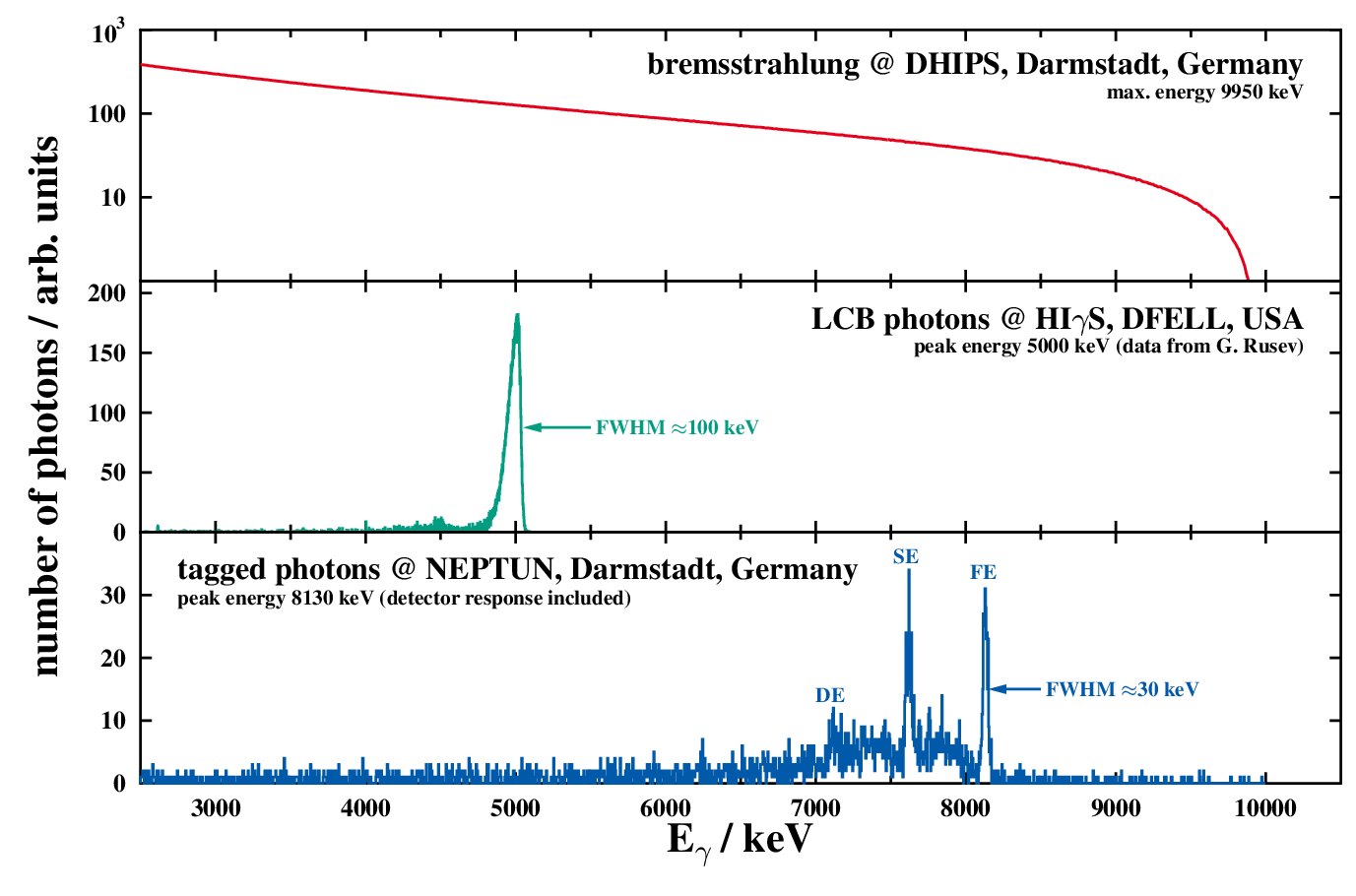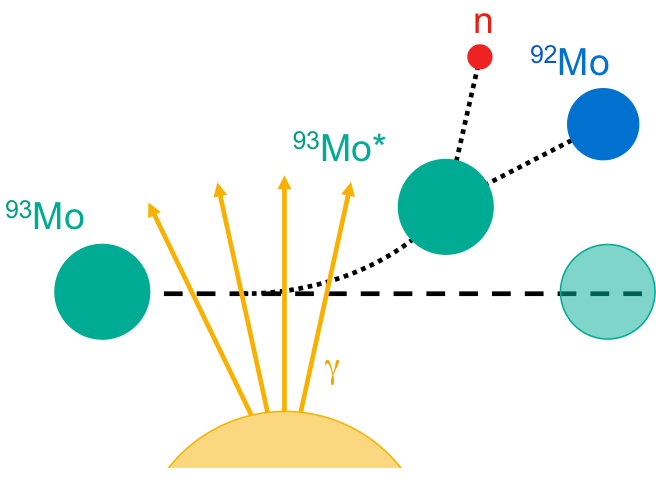γ-induced reactions

High energy γ-rays – allowing the excitation of a
probe nucleus above its particle separation thresholds – are
produced as secondary beams with different mechanisms and
characteristics. If a high energy electron beam is decelerated or
stopped in a solid radiator bremsstrahlung is emitted in a
continuous spectrum with energies up to the beam energy. If a laser
photon is scattered off a relativistic electron its energy is
boosted into the MeV-range. The spectrum of these Laser Compton
Backscattered (LCB) photons depends on the selected solid angle due
to the double-differential character of the underlying Compton
effect.
Bremsstrahlung is usually used to perform experiments with the
activation technique. If the reaction is investigated with spectra
of different maximum energies the energy dependence of the reaction
cross section and the (ground-state) reaction rate at stellar
temperatures can be extracted from the measured yields. To perform
an in-beam experiment, LCB photons or tagged photons are used to
provide a reasonable energy resolution. At an up-to-date LCB-photon
facility like, e.g., HIγS at Duke University the photon
intensities are for a wide energy range high enough to study
γ-induced reactions with both activation and in-beam
techniques.

The reaction cross sections of unstable isotopes can be
investigated in inverse kinematics using Coulomb dissociation. The
relativistic radioactive ion beam impinges on a high-Z probe and is
excited in the virtual photon field. Knowing the complete kinematics
of the reaction the excitation energy can be extracted and, thus,
the reaction cross section.
Experiments
LAND/R3B at GSI
HIγS at Duke University
|